How to Write an Effective Jumpscare
If you want to sell a horror screenplay, you need to learn how to write an effective jumpscare.
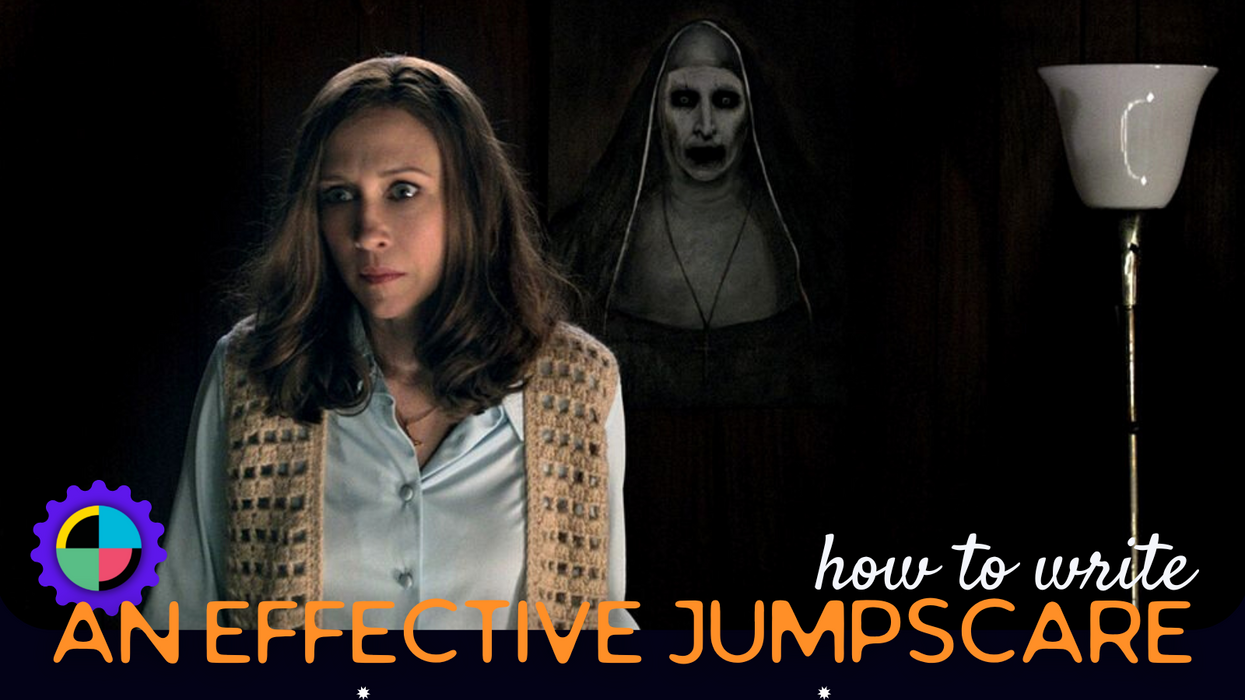
The most basic building block of all horror movies and TV shows is the jumpscare. They're part of that roller coaster of emotions that we rely on from stories that send shivers up and down our spine.
When you're coming up with horror movie ideas or just trying to add a little flavor to your TV show, these pop-out scares can keep the audience on the edge of their seats and allow you to subvert expectations, bending the story to your will.
Are you a fan of horror movies? Want to learn how to write a jumpscare (or jump scare—they're interchangeable) in your screenplay?
Let's get started.
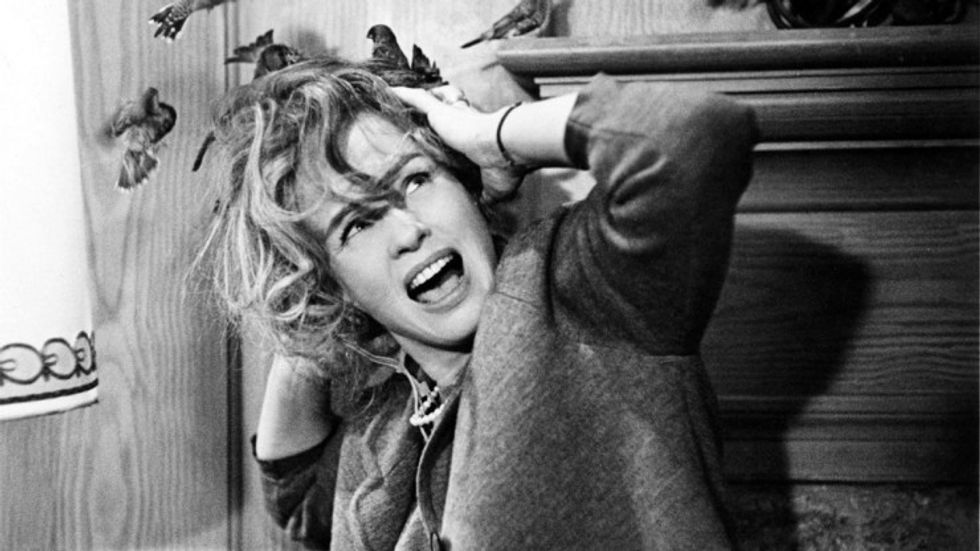
How to Write an Effective Jumpscare
The goal of this article is to teach you how to write jumpscares within your scenes. Hopefully, you already have a strong screenwriting foundation. This will not only enhance your skills on the page, but also come in handy for lots of other genres you enjoy writing.
But before we dig into that, we better look at the exact definition of a jumpscare.
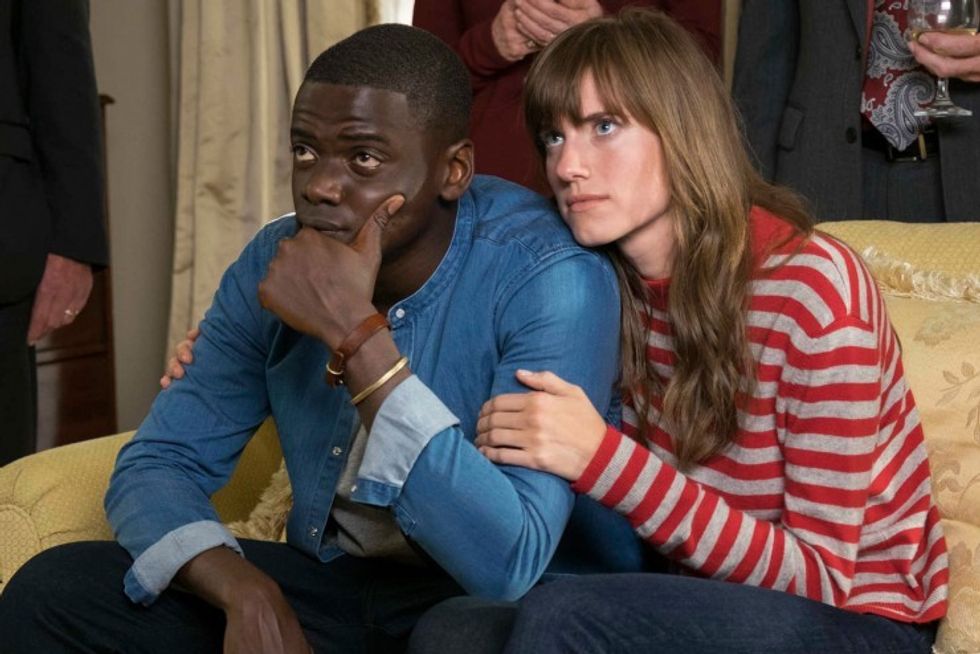
Jumpscare Definition
A jump scare is a technique used in the horror genre (films, TV shows, web series, video games, etc), which incorporates an abrupt change in image or event, usually coinciding with a sound meant to scare the audience.
Why Do We Love Jumpscares in Movies and TV Shows?
We love these classic moments in a horror movie because they breed anticipation. When the scene becomes quiet and still, you know something might be lurking around the corner.
There is nothing but silence in the scene to build tension between the characters and the audience. As the fear builds, the audience is longing for the moment the killer pops out from around the corner to end the moment of dread. When the tension snaps, the audience jolts back in the chairs before laughing off the scare and relaxing again.
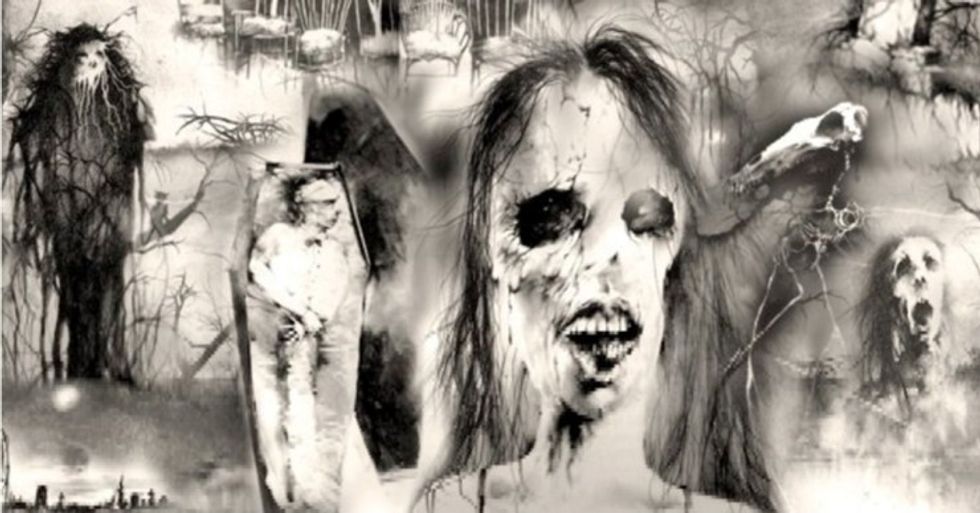
Jumpscare Examples
Want to learn how to write the best jump scares? Watch a ton of horror movies and then read horror screenplays.
I like searching the Where Is the Jump website, which tells you when they occur, so it is easier to find them in screenplays.
We ranked some of the best jumpscares in horror movies last year but it might be time to unpack some of them for some examples.
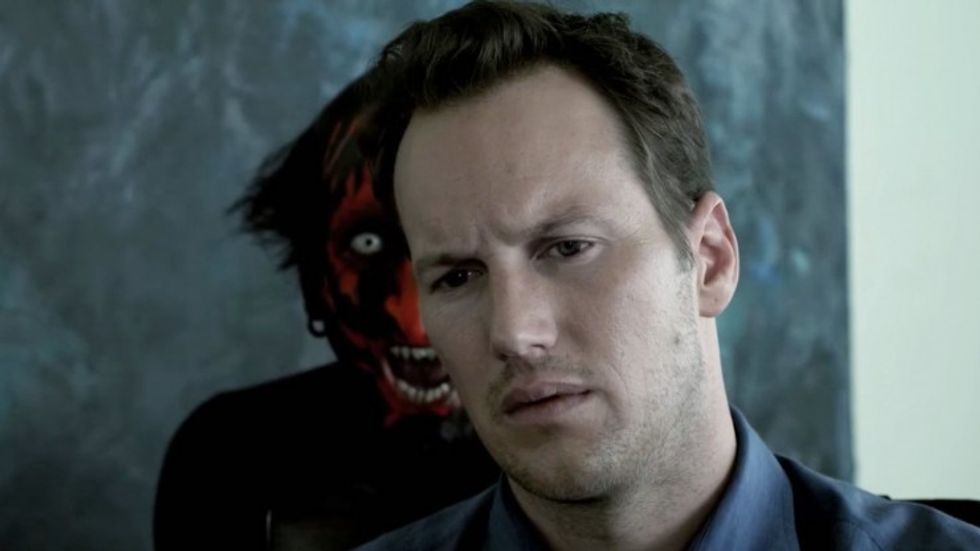
Poltergeist (1982)
One of my favorites comes from the Poltergeist screenplay, the first draft of which was written by Steven Spielberg. In it, we see the little boy, Robbie, looking for a missing clown. Director Tobe Hooper guides the audience along with Robbie as he looks for the clown under his bed. Little does the audience know that the clown is waiting for Robbie when he comes back up from checking under his bed.
Check out how Spielberg wrote the scene.
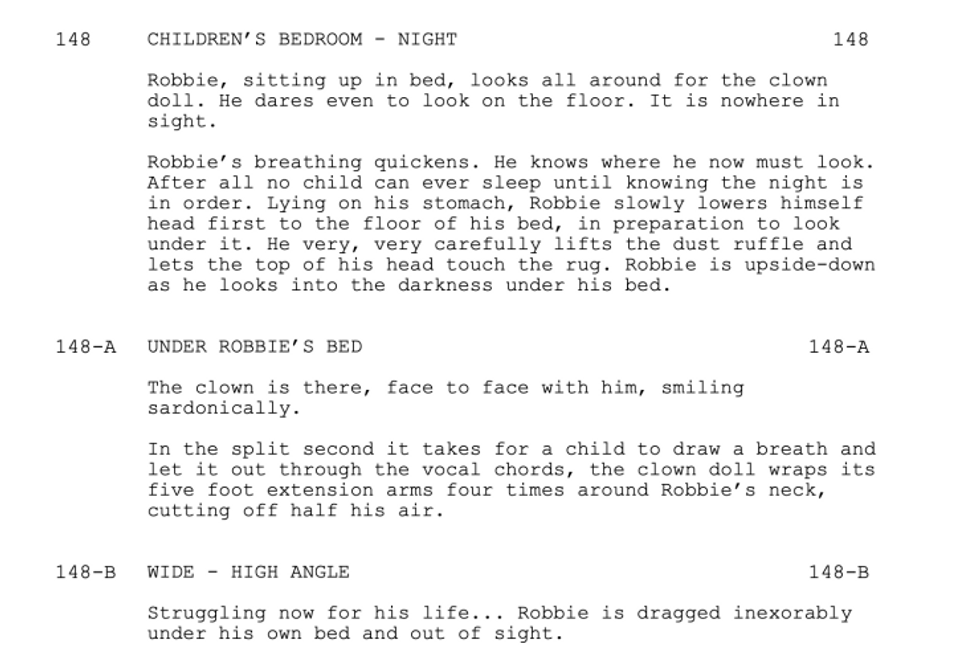
Get Out (2015)
One of the best things about theGet Out screenplay is that it uses jump scares sparingly, working you into a lull before popping out and giving you a huge fright. In one scene, as the young couple at the center of the story drives into the country, there is a deer that crosses the road, which they hit with their car. it seems to come from nowhere and gives the audience a show.
Look how Jordan Peele wrote it on the page:
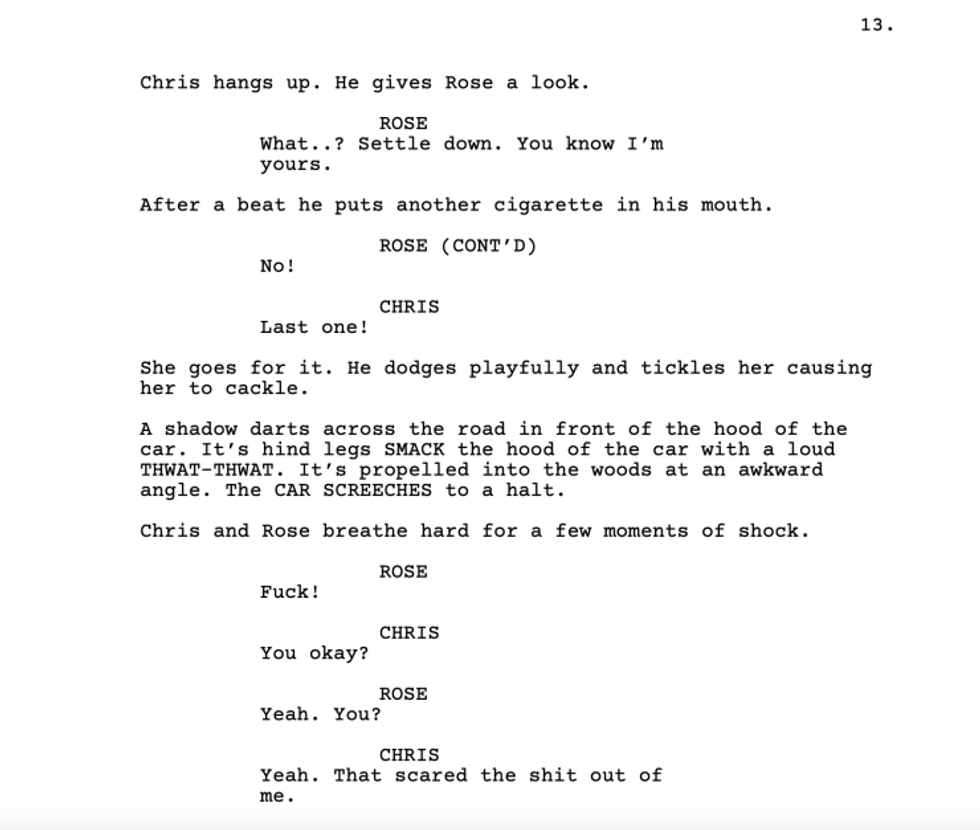
The Conjuring (2013)
The Conjuring was written by Chad Hayes and Corey Hayes and contains some of the most terrifying jumps in any movie I have ever seen. There are so many during the film it was hard to pick just one of them. So I went with the monster in the hallway. It happens around 40 minutes into the movie, and has an amazing pop-out from an unexpected angle.
Check out how the Hayeses wrote the scene.
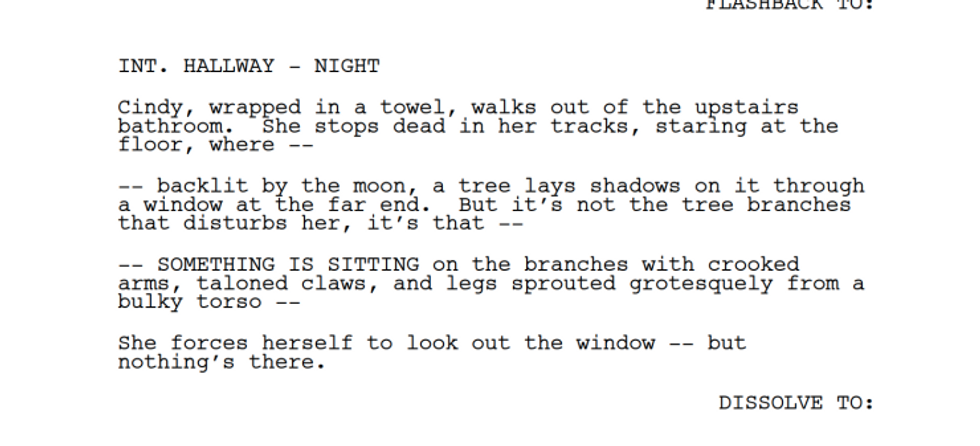
The Techniques Behind How to Write a Jumpscare
What did you learn from reading all these jumpscares? As you can see, there is an economy in language here. Almost like you are writing a set piece but with horror in mind. You are escalating the stakes. Someone is dying, something is being revealed, and something is going an unexpected way here.
First, there are three questions I want you to remember when writing any jump scare:
- Who's in the scene, and what are their expectations?
- What are some ways to defy their expectations so the audience is distracted?
- While distracted, what is a creative way to insert something scary to shock the audience?
Let these three tactics guide you within the scene.
If you've read enough screenplays, then you know storytelling has shifted from the enormous blocks of text that were common in screenplays of old and now have a more staccato rhythm. When you're writing a set piece, you want to break up every line of action into complete ideas.
Don't over-explain or get lost in metaphors. Just give us what's happening in the most precise and concise way.
Build the story while keeping in mind the creaking of doors, the whooshing of the wind, and other literary devices and terms which can make your scene extra creepy. Then surprise us with words in CAPS or ellipses that leads to something terrifying. Be descriptive and set the mood.
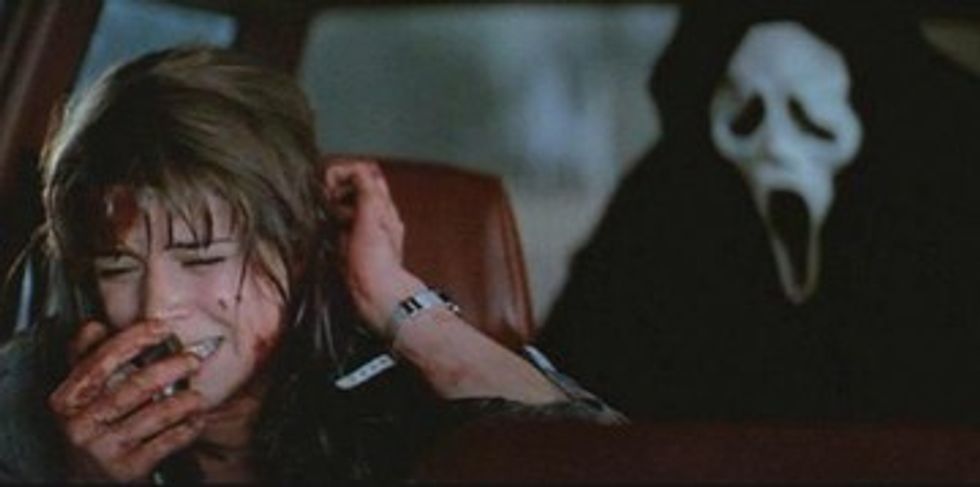
Summing Up "How to Write an Effective Jumpscare"
With this guide, you should be able to make the audience shiver and stir. Now you have the power to manipulate and charge every single scene, creating jumpscares that terrify.
Remember, the horror genre is supposed to be both scary and kind of fun, don't let people look out from behind their fingers, keep the scares coming and they will love you for it.
Now go get writing!












